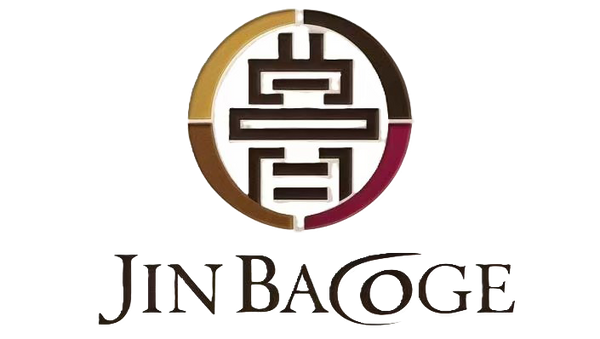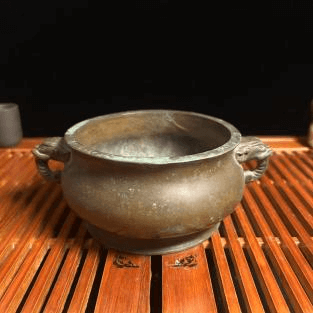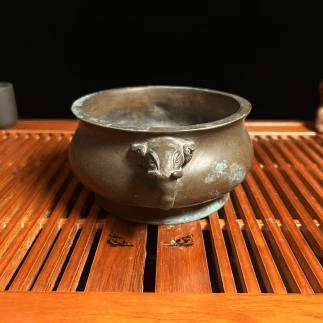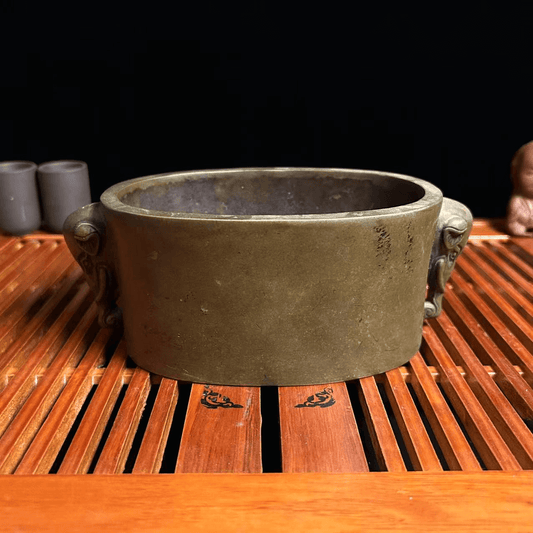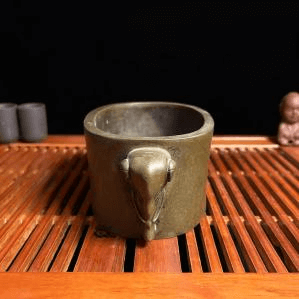Elephant-headed Incense Burner
-
vesselofzen Elephant-headed incense burner (1.3kg)
Regular price $1,122.58 USDRegular priceUnit price / per$1,369.00 USDSale price $1,122.58 USDSale -
vesselofzen Elephant-headed incense burner (1.95kg)
Regular price $1,064.36 USDRegular priceUnit price / per$1,298.00 USDSale price $1,064.36 USDSale
Collection: Elephant-headed Incense Burner
"Ivory Grace: The Elephant-Head Bronze Censer – A Ming Dynasty Tapestry of Wisdom and Prosperity"
Beneath the gilded eaves of the Ming Dynasty palaces (1368–1644), a masterpiece was born: the Elephant-Head Bronze Censer (Xiàngshǒu Lú). Forged from sacred alloys and shaped by legends of kings and deities, this artifact weaves 600 years of history, spirituality, and artistry into its curves — a tribute to China’s reverence for the elephant, a beast of wisdom, strength, and celestial blessing.
1. Origins: A Royal Ode to Celestial Beasts
The tale begins in 1430 CE, during the reign of Emperor Xuande, whose obsession with perfecting bronze craftsmanship led to the creation of the iconic Xuande censers. Among these, the Elephant-Head Censer emerged from a divine vision: it is said the emperor dreamt of a white elephant, a symbol of the Bodhisattva Samantabhadra (a deity of virtue and wisdom in Buddhism), carrying a censer that radiated "peace over the realm."
Moved by the dream, Xuande commissioned his master artisans to craft a censer with elephant-head handles, believing it would channel the beast’s sacred energy. The elephants, with their calm gaze and sturdy trunks, were modeled after the stone guardians of Buddhist temples — creatures that bridge the earthly and divine, symbolizing "strength without aggression, wisdom without arrogance."
2. Symbols in Bronze: The Language of Blessing
Every detail of the Elephant-Head Censer whispers ancient truths:
Elephant-Head Handles (象首耳): The elephants, with their downturned trunks (a sign of blessing in Chinese culture), embody fú (fortune), wisdom, and stability. In Buddhism, the white elephant is Samantabhadra’s mount, representing virtuous action and spiritual progress. Here, they cradle the censer like guardians, infusing it with protective grace.
Rounded Belly & Tripod Feet (圆腹三足): The smooth, ample belly reflects yuánmǎn (wholeness), while the three sturdy feet honor the Three Talents (三才) — heaven, earth, and humanity — grounding the censer in cosmic balance.
Lotus & Cloud Motifs (莲纹云纹): Carved into the base, lotus flowers symbolize purity (a nod to Buddhist ideals), and cloud patterns evoke celestial realms, merging earthly beauty with divine favor.
3. Evolution: From Imperial Altars to Modern Sanctuaries
Ming Dynasty Glory: Reserved for imperial rituals and royal altars, the Elephant-Head Censer was a symbol of Xuande’s reign — a blend of power and piety. Its alloy (copper fused with gold, silver, and tin) developed a warm, honeyed patina, as if kissed by time.
Qing Dynasty & Beyond: As the Ming fell, the censer’s legacy endured. Qing emperors, admiring its symbolism, commissioned replicas for temples and scholar gardens. By the 18th century, it had migrated from palaces to literati studios, where scholars used it during tea ceremonies and meditation, drawn to the elephant’s calm wisdom.
Modern Rebirth: Today, artisans revive the Ming’s lost-wax casting technique to recreate the censer, preserving its sacred proportions and symbolic details. Each piece is a bridge between eras, bringing 600-year-old blessings into contemporary homes.
4. Craftsmanship: Alchemy of Time and Tradition
The Elephant-Head Censer is a marvel of ancient metallurgy:
Sacred Alloy: Recreated with a blend of copper, gold, and silver, it develops a rich, evolving patina — a living record of use, growing more luminous as it absorbs the scent of incense and the warmth of hands.
Lost-Wax Precision: Cast via the Ming method, where wax molds are sacrificed to birth flawless bronze, no two censers are identical. The elephant’s tusks, the curve of its ears, the depth of its gaze — every detail is sculpted with reverence for the original vision.
A Blessing for the Ages
Light incense in an Elephant-Head Censer, and you ignite a dialogue with history. It is more than a vessel; it is a carrier of wisdom, a symbol of prosperity, and a reminder that strength and grace can coexist.
Embrace the elephant’s blessing. Let this censer be your sanctuary — a piece of Ming Dynasty magic, where every curve whispers of celestial favor, cultural legacy, and timeless peace.
Crafted to honor the elephant’s sacred place in Chinese lore and the genius of Xuande-era artisans, this censer is a living heirloom — a testament to the enduring power of beauty, belief, and tradition.
